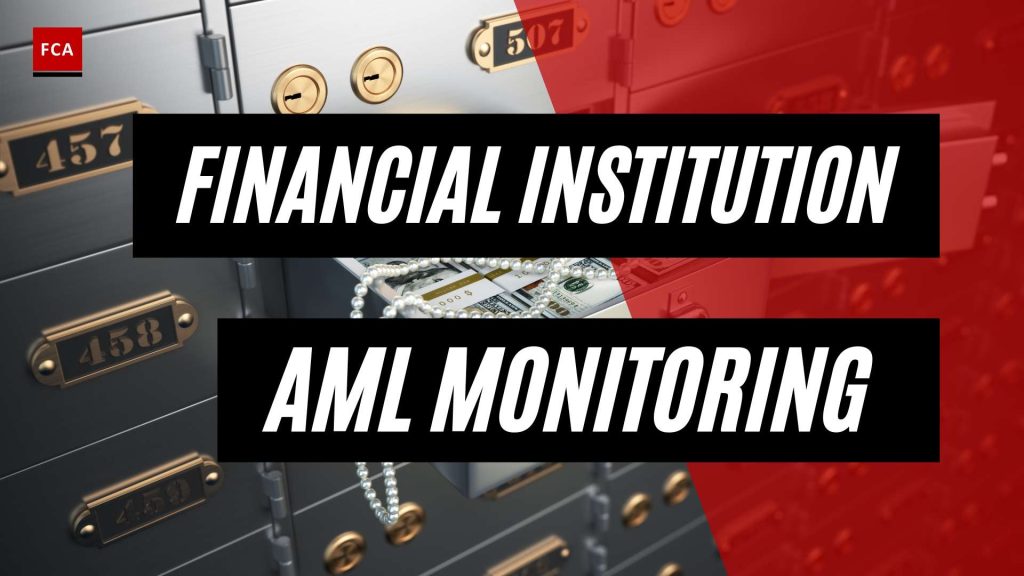Understanding AML Transaction Monitoring
In the realm of financial institutions, Anti-money laundering (AML) transaction monitoring constitutes a vital part of the financial compliance landscape. In this section, we delve into the basics of AML transaction monitoring and its importance.
Basics of AML Transaction Monitoring
AML transaction monitoring involves the constant monitoring of a customer’s transactions, including transfers, deposits, and withdrawals, to identify suspicious behavior that could indicate potential money laundering or financial crime activities. This process is a crucial aspect of financial risk management, as it allows institutions to maintain an active watch over transactional patterns and spot any inconsistencies or suspicious behavior that may signal potential threats.
Transaction monitoring systems, which are traditionally rule-based, incorporate data mining algorithms and AML rules to swiftly analyze large datasets, identify connections that suggest suspicious activity, and highlight transactions that require manual scrutiny (Napier).
These systems are expected to follow a risk-based approach, adjusting the monitoring process according to the specific risk profile of the customer. This alignment of the depth and extent of transaction monitoring with institutional risk assessments is advised by the Financial Action Task Force (FATF).
Importance of AML Transaction Monitoring
AML transaction monitoring is more than just a tool to detect potential fraudulent activity. It is a critical element in maintaining regulatory compliance. Financial institutions are required by law to implement stringent anti-money laundering (AML) and counter-terrorist financing (CTF) measures, which include robust transaction monitoring systems (Flagright).
Effective transaction monitoring enables financial institutions to better manage their risks. By identifying suspicious patterns and trends, institutions can assess their exposure to various forms of financial crime and take proactive steps to mitigate these risks.
Inadequate transaction monitoring can lead to severe repercussions for financial institutions, including regulatory penalties, reputational damage, financial losses, operational challenges, and legal and regulatory scrutiny. Therefore, maintaining a comprehensive and efficient AML transaction monitoring system is key to ensuring the integrity and trustworthiness of financial institutions.
For a deeper understanding of AML transaction monitoring, check out our articles on AML due diligence, AML compliance software, and AML compliance training.
Enhancing AML Transaction Monitoring with AI
In the constantly evolving landscape of financial crime, institutions are seeking innovative ways to enhance their Anti-Money Laundering (AML) transaction monitoring systems. One such approach involves harnessing the power of Artificial Intelligence (AI) and Machine Learning (ML).
Role of AI and Machine Learning
Traditional AML transaction monitoring systems are rule-based. These systems are designed to flag transactions that violate predefined rules related to factors such as transaction value, frequency, or geographic location. However, these rule-based systems can fail to detect complex patterns of suspicious behavior that indicate potential criminal activity. This is where AI and ML can step in to provide an enhanced layer of protection.
By utilizing AI and ML algorithms, AML transaction monitoring systems can learn from historical transaction data to identify patterns and trends associated with fraudulent activity. These algorithms can adapt and evolve over time, improving their ability to detect suspicious activities and reducing the number of false positives.
AI can also be combined with Natural Language Processing (NLP) and Natural Language Understanding (NLU) technologies to further enhance risk detection capabilities. These technologies enable the system to interpret and understand human language, including the context and intent behind it. This can be particularly useful in identifying suspicious transactions that involve complex financial terminology or coded language.
Benefits of AI in AML Transaction Monitoring
The integration of AI into AML transaction monitoring systems offers several benefits. Firstly, AI can improve detection capabilities, enabling financial institutions to identify and prevent potential criminal activities more effectively. By learning from historical data, AI can recognize patterns that might be missed by traditional rule-based systems, reducing false negatives in the process (Napier).
Secondly, AI can reduce the number of false positives generated by the system. False positives, or legitimate transactions that are incorrectly flagged as suspicious, can be a significant drain on resources, as each alert needs to be manually reviewed and cleared. By improving the accuracy of detection, AI can help to reduce the workload of compliance teams and increase operational efficiency.
Finally, AI can enhance compliance efficiency by automating routine tasks, freeing up human resources to focus on more complex and strategic issues. For instance, Robotic Process Automation (RPA) can be used to automate repetitive tasks such as data collection and verification, thereby increasing the speed and accuracy of AML compliance processes.
By embracing AI and Machine Learning, financial institutions can significantly enhance their AML transaction monitoring capabilities, thereby ensuring better compliance with anti-money laundering regulations and safeguarding their reputation.
Challenges in AML Transaction Monitoring
Despite the advancements in technology and increased regulatory focus, there remain significant challenges in AML transaction monitoring. These issues primarily revolve around dealing with false positives and the continually evolving regulatory landscape.
Dealing with False Positives
A major issue with traditional AML transaction monitoring systems is the high number of false positives they generate. According to Sanction Scanner, the prevalence of false alerts can be as high as 90 percent. This leads to inefficiencies and wasted resources as compliance teams spend time investigating alerts that have no actual correlation with suspicious activities.
Sophisticated criminals can also deceive static, rule-based transaction monitoring systems, allowing them to evade detection by operating within predefined thresholds. To address this challenge, financial institutions are increasingly adopting advanced technologies such as AI and machine learning. These technologies offer refined detection models that can mitigate false positives and improve the accuracy and efficiency of transaction monitoring processes.
However, the effectiveness of AI in transaction monitoring hinges on the quality and integrity of data. Organizations must ensure reliable and accurate data as a single source of truth, emphasizing the importance of careful data collection and thorough validation processes (Sanction Scanner). To learn more about the role of AI in AML transaction monitoring, check out our article on AML compliance software.
Evolving Regulatory Landscape
Another key challenge in AML transaction monitoring is the constantly evolving regulatory landscape. AML regulations are continuously being updated globally, and financial institutions must be able to quickly adapt to these changes to maintain compliance.
In 2018, global financial regulators imposed over $2.9 billion in fines for AML disputes, a figure that doubled in 2019. Numerous companies have faced money laundering scandals, resulting in significant financial costs.
These figures emphasize the importance of effective AML transaction monitoring to minimize risks associated with illegal financial activities and avoid potential financial sanctions. AML transaction monitoring tools provide real-time updates on regulatory changes, helping to ensure that all transactions comply with the latest regulations and offering the necessary resources to stay up-to-date and maintain a strong compliance program. For more information on this topic, visit our page on AML laws and regulations.
AML Transaction Monitoring in the Digital Age
As technology continues to evolve, so does the landscape of financial transactions. The rise of mobile banking and digital payments has transformed the way we interact with money. However, these advancements also present new challenges for AML transaction monitoring.
Vulnerability of Mobile and Digital Payments
Mobile banking and digital payment transactions are areas that are particularly vulnerable to money laundering activities. The convenience and speed of these transactions can sometimes obscure illicit activities, making it difficult for financial institutions to detect and prevent fraudulent behavior.
Transaction monitoring refers to the process of scrutinizing individual and collective financial transactions to detect unusual activities and prevent fraudulent actions. With the increasing use of digital payments, implementing robust transaction monitoring systems becomes even more vital.
The goal is to identify suspicious patterns, mitigate potential risks, and comply with relevant regulatory requirements, such as anti-money laundering regulations. Financial institutions are required by law to implement stringent anti-money laundering (AML) and counter-terrorist financing (CTF) measures, which include robust transaction monitoring systems (Flagright).
Blockchain in AML Transaction Monitoring
Another significant development in the digital age is the integration of blockchain technology in transaction monitoring. Blockchain, a decentralized and transparent ledger system, enables real-time tracking of transactions, improving the speed and efficiency of AML efforts.
The application of blockchain technology in AML transaction monitoring can offer several benefits. First, it provides a secure and transparent record of transactions, making it more difficult for illicit activities to go unnoticed. Second, the decentralization of blockchain technology reduces the risk of data tampering or fraud. And finally, the real-time nature of blockchain can allow for quicker detection and response to suspicious activities.
However, the use of blockchain in AML transaction monitoring also presents new challenges. For instance, the pseudonymous nature of some blockchain transactions can make it more difficult to trace the source and destination of funds. Therefore, financial institutions need to keep updating their AML compliance software and AML compliance training to keep up with these technological advancements.
Navigating AML transaction monitoring in the digital age requires a careful balance between leveraging new technologies and maintaining stringent regulatory compliance. By staying informed about the latest developments and challenges, financial institutions can better protect themselves and their customers from the risks of money laundering and other financial crimes.
Future Trends in AML Transaction Monitoring
As financial institutions and regulatory bodies continue to combat money laundering activities, advanced technologies and strategies are being adopted to enhance AML transaction monitoring efforts.
Market Growth and Predictions
The importance and complexity of AML transaction monitoring have led to a significant increase in global spending on AML compliance. By 2023, this spending is expected to exceed $8 billion, with a compound annual growth rate of 17.3% from 2020 to 2025.
Furthermore, the global AML transaction monitoring market is predicted to reach $1.4 billion by 2026, growing at a CAGR of 12.8% from 2021 to 2026. This growth can be attributed to the increasing need for effective solutions to detect and prevent money laundering activities, as well as the strict anti-money laundering regulations that financial institutions must adhere to.
Technological Advancements
The integration of advanced technologies is one of the key trends shaping the future of AML transaction monitoring. Artificial Intelligence (AI) and Machine Learning algorithms are increasingly being incorporated into AML compliance software to enhance detection capabilities and reduce the occurrence of false positives.
Additionally, technologies like Blockchain are being integrated into transaction monitoring systems to enable real-time tracking of transactions. This improves the speed and efficiency of AML efforts, making it easier for financial institutions to comply with AML laws and regulations (CSI).
On top of AI and Blockchain, financial institutions are also focusing on the integration of Robotic Process Automation (RPA) technologies to enhance their AML transaction monitoring capabilities (Blackdot Solutions).
Furthermore, advanced AML transaction monitoring solutions are leveraging Natural Language Processing (NLP) and Natural Language Understanding (NLU) capabilities to enhance risk detection and improve compliance efficiency.
These advancements are set to revolutionize AML transaction monitoring, offering financial institutions powerful tools to ensure compliance and protect their operations from the risks of money laundering. As these technologies continue to develop, it’s crucial for professionals in compliance and risk management to stay updated on the latest trends and strategies in AML transaction monitoring. For more information on this topic, consider our AML compliance training courses.
Importance of Customized AML Rules
Customizing anti-money laundering (AML) rules is a critical part of establishing an effective AML transaction monitoring system. The customization of these rules is influenced by several factors, primarily the risk profile of each customer. This section will explore why tailoring AML rules to risk profiles is important and the impact of such customization on AML compliance.
Tailoring Rules to Risk Profile
AML transaction monitoring systems should adopt a risk-based approach, tailoring the monitoring process according to the specific risk profile of each customer. This approach is advised by the Financial Action Task Force (FATF), which encourages financial institutions to align the depth and extent of transaction monitoring with their institutional risk assessments Napier.
Customizing rules in AML transaction monitoring systems is essential for an effective system. Ready-to-use rules may not align with an institution’s specific risk appetite, which could lead to missed suspicious activities. This highlights the importance of tailoring rules according to the institution’s risk profile for an effective transaction monitoring process Sanction Scanner.
To achieve this, financial institutions can leverage AML risk assessment methodologies to understand and categorize customer risk profiles. This assessment can then guide the formulation of customized AML rules, enhancing the efficacy of the transaction monitoring system.
Impact on AML Compliance
Customizing AML rules has a significant impact on compliance. AML transaction monitoring solutions are essential for detecting suspicious activities, ensuring compliance with regulatory requirements, and safeguarding financial institutions from potential risks related to money laundering and terrorist financing Blackdot Solutions.
Adapting AML rules to an institution’s risk profile helps to enhance compliance by ensuring that the transaction monitoring system is attuned to the specific risks associated with each customer. This increases the system’s ability to detect potentially illicit transactions and report them in accordance with AML laws and regulations.
The use of technology, including machine learning and artificial intelligence, can further improve the customization of AML rules. These technologies can enhance detection capabilities, reduce false positives, and increase compliance efficiency in financial institutions Tookitaki, Blackdot Solutions.
Ultimately, the customization of AML rules is a key factor in maintaining robust AML compliance. By tailoring these rules to the specific risk profiles of customers, financial institutions can enhance their transaction monitoring capabilities and comply more effectively with AML regulations. This is essential not only for meeting regulatory requirements but also for protecting the integrity of financial systems and preventing the misuse of financial institutions for illicit purposes.
Role of Data in AML Transaction Monitoring
In the domain of anti-money laundering, or AML, the role of data is instrumental. Reliable, accurate, and timely data is the cornerstone of effective AML transaction monitoring systems. It’s the fuel for the advanced technologies like machine learning and artificial intelligence that are revolutionizing the way financial institutions combat financial crimes.
Importance of Reliable Data
Reliable data is at the heart of AML transaction monitoring. These systems employ machine learning and data analytics to detect unusual behavior among transactions and monitor for possible money laundering activities (Blackdot Solutions). To leverage Artificial Intelligence (AI) in Transaction Monitoring solutions, organizations must ensure reliable and accurate data as a single source of truth. It emphasizes that the quality and integrity of data are critical for effective AI deployment in Transaction Monitoring systems.
Reliable data not only improves detection capabilities but also reduces false positives, enhancing compliance efficiency in financial institutions (Tookitaki). It is also essential for ensuring compliance with anti-money laundering regulations and safeguarding financial institutions from potential risks related to money laundering and terrorist financing.
Data Collection and Verification Processes
Collecting and verifying data is a crucial step in AML transaction monitoring. Financial institutions need to establish thorough and accurate data collection processes to gather the required information from various sources. This data can include customer details, transaction records, and other relevant financial information. It’s also important to verify this data to ensure its accuracy and reliability. Verification processes typically involve cross-checking data with multiple sources and using advanced analytics to detect any discrepancies or anomalies.
Once collected and verified, this data becomes a valuable resource for AML transaction monitoring. Advanced AML transaction monitoring solutions can utilize this data, leveraging natural language processing and natural language understanding capabilities to enhance risk detection and compliance efficiency.
Effective data collection and verification processes are an integral part of a robust AML compliance program. They support key AML processes like AML risk assessment and AML due diligence, and provide the necessary inputs for AML compliance software. They also underpin the AML customer identification program, which is a critical element of compliance with AML laws and regulations.
In conclusion, the role of data in AML transaction monitoring cannot be overstated. Reliable, accurate, and timely data is the backbone of an effective AML compliance program, enhancing risk detection capabilities, ensuring regulatory compliance, and safeguarding financial institutions from the risks of money laundering and financial crimes.









